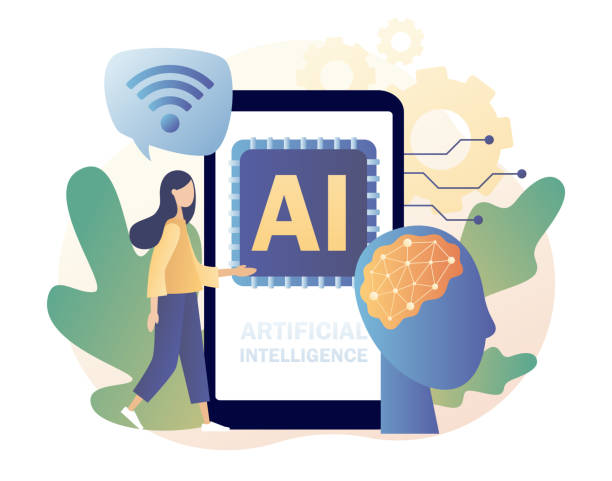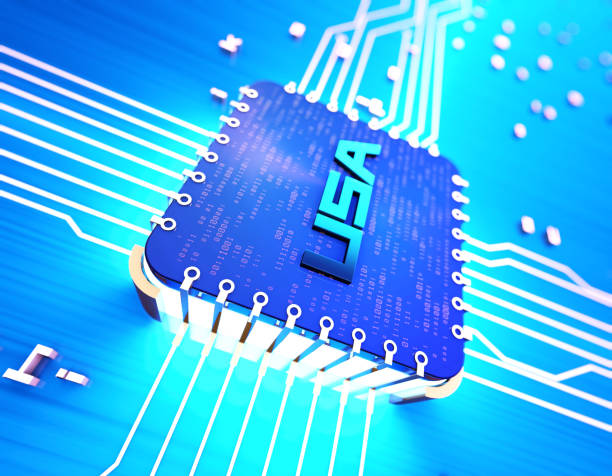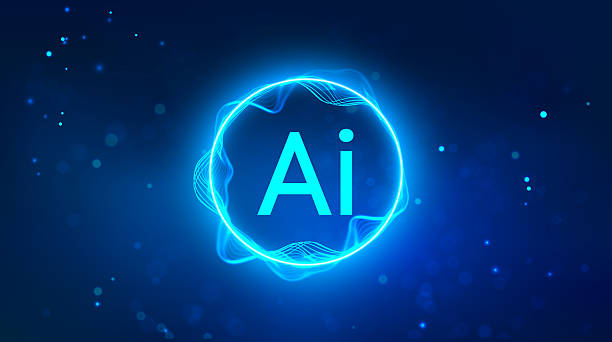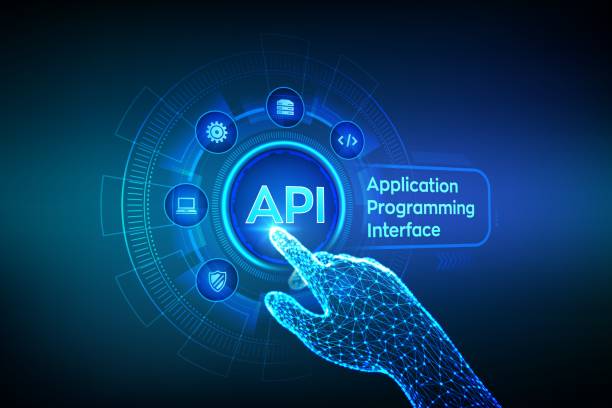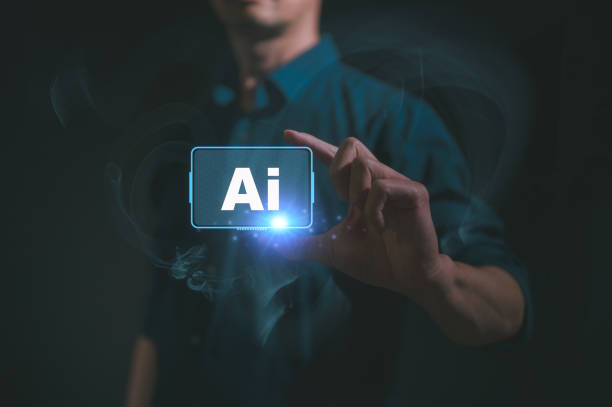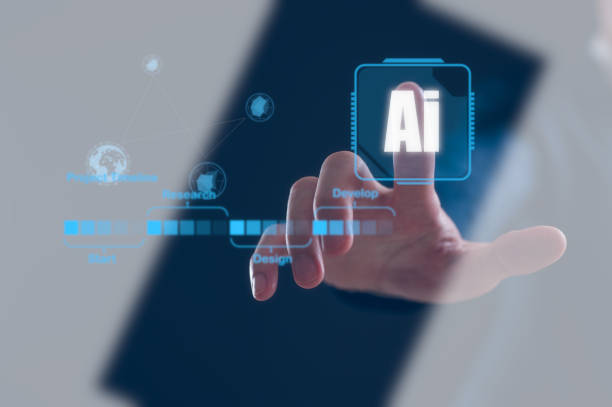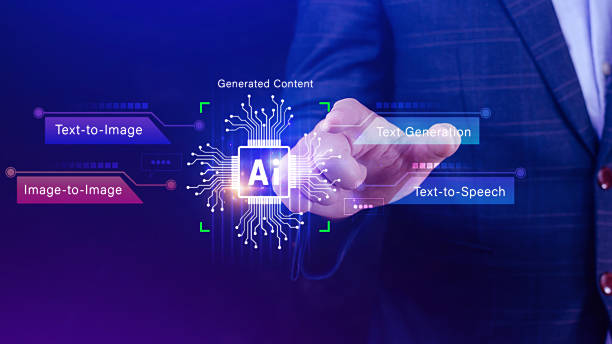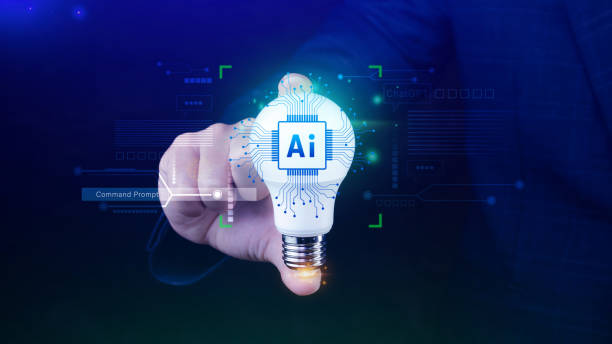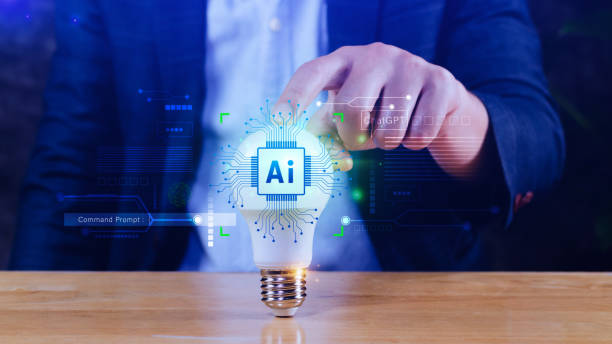What is an Artificial Intelligence Robot? Definition and Basic Concepts
#Artificial Intelligence Robot (AI Robot) is a combination of two key areas: #Artificial Intelligence and #Robotics.
In short, an AI robot is a physical machine that, using artificial intelligence algorithms, is capable of performing tasks that usually require human intelligence.
These tasks can include learning, reasoning, problem-solving, pattern recognition, and decision-making.
The main difference between ordinary robots and AI robots is that ordinary robots operate according to a pre-determined program, while AI robots can learn by receiving data from the surrounding environment and adapt their behavior accordingly.
These robots collect information from the environment through sensors. This information is sent to the central processing unit (CPU) and analyzed using complex artificial intelligence algorithms.
Then, based on these analyses, the robot makes the necessary decisions and converts these decisions into action through actuators.
In other words, an AI robot is an automated system capable of understanding the environment, reasoning, and acting independently.
Artificial intelligence plays an important role in enhancing the capabilities of these robots.
One of the prominent features of AI robots is their ability to learn and improve performance over time.
These robots can use machine learning algorithms to learn from their experiences and improve their performance in the future.
For example, an AI robot designed to play chess can learn new strategies by playing more games and become a stronger player.
Ultimately, the AI robot represents humanity’s efforts to create machines capable of performing complex tasks automatically.
These robots have great potential to change our lives in various fields and can help improve quality of life, increase productivity, and solve complex problems.
Do visitors leave your online store site before making a purchase? Worry no more! With Rasaweb’s professional online store website design services, solve the problem of not converting visitors into customers forever!
✅ Significant increase in conversion and sales rates
✅ Unique and attractive user experience
⚡ Contact us now for a free consultation!
Types of Artificial Intelligence Robots Based on Application
AI robots come in various types depending on their application.
Industrial robots are used for performing repetitive and heavy tasks in production lines.
These robots can work continuously and with high precision, helping to increase productivity.
Industrial robots are commonly used in factories and large industries.
Click here to preview your posts with PRO themes ››
Service robots are designed to provide services to humans.
These robots can be used in hospitals to assist nurses, in hotels to welcome guests, and in homes to perform daily tasks.
Service robots usually have a simple and understandable user interface and can easily interact with humans.
Medical robots are used to assist doctors in diagnosing and treating diseases.
These robots can play a role in performing complex surgeries, medical imaging, and rehabilitating patients.
Medical robots usually have high accuracy and precision and can help improve treatment outcomes.
The use of #artificial intelligence robots in the field of medicine, especially in precise surgeries, is increasing.
Military robots are used to perform dangerous and high-risk tasks on the battlefield.
These robots can automatically neutralize mines, identify enemy targets, and participate in rescue operations.
Military robots are usually highly resistant to harsh conditions and can help save soldiers’ lives.
Space robots are used for conducting research and exploration in space.
These robots can collect soil samples, take images of planets, and repair space equipment.
Space robots usually have high autonomy and can continue their work in conditions far from human reach.
Each of these types of AI robots, depending on their specific needs, uses different technologies and algorithms.
However, they all have one thing in common: the use of artificial intelligence to perform tasks that require human intelligence.
Main Components of an Artificial Intelligence Robot
An AI robot consists of several main parts, each responsible for a specific task.
Sensors are used to collect information from the surrounding environment.
These sensors can be of various types, including cameras, microphones, temperature sensors, pressure sensors, and proximity sensors.
The information collected by the sensors is sent to the central processing unit (CPU).
Click here to preview your posts with PRO themes ››
The central processing unit (CPU) is the brain of the AI robot and is responsible for analyzing information, making decisions, and controlling actuators.
The CPU uses artificial intelligence algorithms to process the information received from the sensors and, based on that, makes the necessary decisions.
These decisions are sent to the actuators.
Actuators are responsible for implementing the CPU’s decisions.
These actuators can be of various types, including motors, pumps, valves, and arms.
Actuators move and perform the desired tasks upon receiving a command from the CPU.
For example, an AI robot designed to move objects uses motors to move its arms and move the objects.
In addition to these three main parts, an AI robot also needs a power source.
The power source can be a battery, mains electricity, or any other source that provides the energy needed for the robot to function.
Also, an AI robot needs software.
The software includes artificial intelligence algorithms, control programs, and a user interface.
The software allows the robot to process information, make decisions, and interact with the surrounding environment.
These components work together to form an automated system capable of performing complex tasks independently.
The #AI robot, by combining these components, has great potential to change our lives in various fields.
| Main Components | Function |
|---|---|
| Sensors | Collect information from the environment |
| Central Processing Unit (CPU) | Analyze information and make decisions |
| Actuators | Implement decisions |
| Power Source | Supply energy |
| Software | Control and interact with the environment |
Artificial Intelligence Algorithms Used in Robots
Artificial intelligence algorithms play a very important role in the performance of robots.
These algorithms allow robots to process information, make decisions, and interact with the surrounding environment.
One of the most important artificial intelligence algorithms is #Machine Learning.
Machine learning allows robots to learn from data and improve their performance over time.
For example, an AI robot designed for facial recognition can recognize more faces and increase its accuracy by using machine learning algorithms.
Machine learning is one of the fundamental pillars of artificial intelligence.
#Neural Networks are another important artificial intelligence algorithm.
Neural networks are inspired by the structure of the human brain and are used to solve complex problems.
These networks can allow robots to recognize patterns, make predictions, and make complex decisions.
For example, an AI robot designed for self-driving can analyze traffic, detect obstacles, and safely determine its route by using neural networks.
#Natural Language Processing (NLP) allows robots to understand human language and interact with humans in natural language.
These algorithms can allow robots to understand voice commands, answer questions, and extract information from text.
For example, an AI robot designed to help customers can answer customer questions and solve their problems by using natural language processing.
#Computer Vision allows robots to understand images and extract information from them.
These algorithms can allow robots to recognize objects, identify faces, and understand the surrounding environment.
For example, an AI robot designed for security surveillance can detect suspicious movements and alert authorities by using computer vision.
These algorithms work together to allow robots to perform complex tasks automatically.
With technological advancements, more advanced artificial intelligence algorithms are also being developed that can significantly enhance the capabilities of robots.
Are you annoyed by losing customers who visited your site to make a purchase?
Rasaweb is your specialized solution for having a successful online store.
✅ Significant increase in your online sales
✅ Creating trust and professional branding with customers⚡ Get free consultation from Rasaweb experts!
Applications of Artificial Intelligence Robots in Industry
Industry is one of the fields where artificial intelligence robots have many applications.
Industrial robots can perform repetitive and heavy tasks with high accuracy and speed, helping to increase productivity.
These robots can be used in production lines, assembling parts, packaging products, and quality control.
The use of AI robots in industry, especially in mass production, is very common.
One of the important applications of AI robots in industry is process automation.
Robots can automate production processes and reduce the need for human intervention.
This can lead to reduced costs, increased production speed, and improved product quality.
For example, an AI robot can automatically pick parts from a conveyor belt, assemble them, and package the final product.
AI robots can also play an important role in product quality control.
These robots can use sensors and computer vision algorithms to inspect products and detect defects.
This can prevent defective products from entering the market and improve customer satisfaction.
For example, an AI robot can inspect electronic components and identify those with improper soldering.
AI robots can also play a role in warehousing and logistics.
These robots can automatically collect goods from warehouses, package them, and ship them to their destination.
This can lead to reduced costs, increased delivery speed, and improved warehouse management.
For example, an AI robot can automatically pick goods from shelves, scan them, and load them into trucks.
The use of AI robots in industry not only helps to increase productivity and reduce costs but can also improve worker safety.
Robots can perform dangerous and high-risk tasks and prevent workers from being harmed.
For example, an AI robot can work in environments contaminated with chemicals and reduce the need for human presence.
The Role of Artificial Intelligence Robots in Medicine and Health
Artificial intelligence robots are revolutionizing the field of medicine and health.
These robots can assist doctors in diagnosing and treating diseases, performing complex surgeries, and providing healthcare to patients.
One of the important applications of AI robots in medicine is diagnosing diseases.
Robots can use machine learning algorithms to analyze medical images and detect signs of disease.
This can help in the early diagnosis of diseases and improve treatment outcomes.
For example, an AI robot can review radiology images and detect signs of cancer.
AI robots can also play an important role in complex surgeries.
These robots can perform surgery with high precision and accuracy and reduce the risk of side effects.
Robotic surgeries usually have a shorter recovery period, and patients can quickly return to their normal lives.
For example, an AI robot can perform heart surgery with minimal invasion.
AI robots can also play a role in rehabilitating patients.
These robots can help patients regain their motor skills and achieve greater independence.
Rehabilitation robots usually have advanced sensors and algorithms that allow them to track patient movements and provide appropriate exercise programs.
For example, an AI robot can help patients who have suffered a stroke learn to walk again.
AI robots can also play a role in providing healthcare to patients.
These robots can help patients take their medications, track their symptoms, and communicate with their doctors.
Healthcare robots usually have a simple and understandable user interface and can help patients manage their healthcare more effectively.
For example, an AI robot can help diabetic patients control their blood sugar levels.
The use of AI robots in medicine and health has great potential to improve the quality of healthcare and increase life expectancy.
With technological advancements, AI robots are expected to play a greater role in the field of medicine and health.
Challenges and Limitations of Artificial Intelligence Robots
Despite the high potential of artificial intelligence robots, this technology still faces challenges and limitations.
One of the main challenges is the high cost of developing and implementing AI robots.
Designing, building, and programming these robots requires a lot of expertise and resources.
This makes the use of AI robots unaffordable for many organizations and companies.
Another important challenge is the ethical issues related to the use of AI robots.
Robot decisions may have unintended consequences, and who is responsible for these consequences? Should robots be involved in sensitive decision-making, such as diagnosing diseases or selecting military targets? These questions require careful consideration and the development of appropriate laws and regulations.
The security of AI robots is also an important issue.
Robots may be subject to cyberattacks, and their information may be stolen or their performance disrupted.
This can have serious consequences for organizations and companies that use robots.
Therefore, ensuring the security of AI robots is of utmost importance.
Technical limitations are another challenge facing AI robots.
Robots are still unable to fully understand their surroundings and may face problems in unexpected situations.
Also, robots cannot imitate human creativity and initiative and may have difficulty solving complex problems.
Therefore, improving the technical capabilities of robots is of utmost importance.
Despite these challenges and limitations, technological advancements are rapidly addressing them.
With reduced costs, improved security, and increased technical capabilities, AI robots are expected to play a greater role in our lives.
| Challenges | Description |
|---|---|
| High Cost | Development and implementation are expensive |
| Ethical Issues | Decisions and responsibilities |
| Security | Vulnerability to cyberattacks |
| Technical Limitations | Limited understanding of the environment and lack of creativity |
The Future of AI Robots: Prospects and Predictions
The future of AI robots looks very bright and promising.
With technological advancements, AI robots are expected to play a greater role in our lives.
One of the important prospects is the expansion of the use of robots in various industries.
Robots can be used in production lines, warehouses, farms, and mines to increase productivity and reduce costs.
AI robots are expected to be widely used in various industries in the near future.
The development of smarter and more independent robots is another important prospect.
Robots can use advanced artificial intelligence algorithms to collect more information from their surroundings, make better decisions, and perform more complex tasks.
Smarter robots can operate independently in unexpected situations and reduce the need for human intervention.
For example, an AI robot can automatically move in an unknown environment and perform its tasks.
The creation of humanoid robots is another attractive prospect.
These robots can interact with humans, help them, and perform various tasks.
Humanoid robots can be used in hospitals, hotels, schools, and homes.
For example, a humanoid robot can help seniors perform their daily tasks.
The integration of robots with other technologies is another important trend.
Robots can be integrated with the Internet of Things (IoT), Blockchain, and other technologies and offer new capabilities.
For example, an AI robot can use the Internet of Things to collect information from various devices and make better decisions based on it.
Despite these bright prospects, the challenges and limitations of AI robots must also be considered.
Developing smarter and more independent robots requires a lot of effort and investment.
Also, the ethical and security issues related to the use of robots must be addressed, and appropriate laws and regulations must be developed.
However, with technological advancements and attention to these issues, AI robots are expected to play an important role in our future.
Are you tired of having visitors to your online store but no sales? Rasaweb solves your main problem with professional online store website design!
✅ Significant increase in sales with targeted design
✅ Flawless user experience for your customers
⚡ Get free consultation!
How to Build an Artificial Intelligence Robot: A Step-by-Step Guide
Building an artificial intelligence robot can be an exciting and challenging project.
To get started, you need a hardware platform.
This platform can be an Arduino board, Raspberry Pi, or any other platform that can connect to sensors and actuators.
Then, you need to choose the sensors and actuators you need.
Sensors are used to collect information from the surrounding environment, and actuators are used to implement CPU decisions.
For example, if you want to build an AI robot that can detect obstacles, you need ultrasonic sensors.
After selecting the hardware platform, sensors, and actuators, you need to develop the software you need.
This software includes artificial intelligence algorithms, control programs, and a user interface.
You can use various programming languages such as Python, C++, and Java to develop your software.
Python is a popular choice because of its simplicity and the availability of numerous artificial intelligence libraries.
To train your AI robot, you need training data.
This data can be images, sounds, texts, or any other type of data that the robot needs to learn.
You can collect your training data or use existing data sets.
After collecting the data, you need to pre-process it and prepare it for training the robot.
After preparing the data, you can implement your artificial intelligence algorithms and train your robot.
You can use machine learning algorithms, neural networks, natural language processing, and computer vision to train your robot.
After training the robot, you need to evaluate its performance and improve your algorithms and training data if necessary.
Building an AI robot requires patience, perseverance, and technical knowledge.
But with effort and practice, you can build an AI robot capable of performing complex tasks.
There are many educational resources on the Internet that can help you along the way.
Artificial Intelligence Robots and Their Impact on Future Jobs
#Artificial Intelligence Robots are increasingly changing the landscape of future jobs.
While some are worried about losing their jobs due to automation, others believe that robots can create new opportunities.
The reality is that the impact of AI robots on future jobs is complex and depends on various factors.
#Automation threatens many repetitive and routine jobs.
Robots can perform these tasks with greater accuracy and speed, reducing the need for human labor.
Jobs such as production line operators, truck drivers, and office workers are at risk of automation.
However, automation can also lead to the creation of new jobs.
For example, the need for AI specialists, robotics engineers, and robot maintenance technicians will increase.
Artificial intelligence robots can also help improve the performance and productivity of human labor.
Robots can perform difficult and dangerous tasks, allowing humans to focus on more complex and creative tasks.
This can lead to increased job satisfaction and improved quality of life for human labor.
For example, an AI robot can assist doctors in diagnosing diseases, allowing them to spend more time with their patients.
#The need for new skills is another important impact of AI robots on future jobs.
In the future, human labor will need new skills such as critical thinking, problem-solving, creativity, and collaboration.
These skills allow humans to work with robots and perform tasks that robots cannot do.
#Continuous education and learning is also essential for success in future jobs.
Human labor must constantly update their skills and become familiar with new technologies.
Governments, organizations, and individuals must invest in education and learning to prepare the workforce for future jobs.
Ultimately, the impact of AI robots on future jobs depends on how this technology is managed and how prepared the workforce is.
With proper planning and investment in education and learning, the opportunities created by robots can be leveraged and potential risks can be avoided.
#The future of jobs with #Artificial Intelligence Robots can be bright if managed properly.
Frequently Asked Questions
| Row | Question | Answer |
|---|---|---|
| 1 | What is an AI robot? | An AI robot is a machine capable of understanding, reasoning, learning, and problem-solving, and can perform complex tasks with relative autonomy. |
| 2 | What are the most important applications of AI robots? | The main applications include industrial production, customer service (chatbots), medicine and surgery, self-driving transportation, space exploration, and military affairs. |
| 3 | What is the main difference between an AI robot and a regular robot? | A regular robot only follows programmed instructions, while an AI robot can learn from data, make decisions, and adapt to new environments. |
| 4 | How do AI robots learn? | They learn through machine learning algorithms (such as deep learning, reinforcement learning) and processing huge amounts of data, identifying patterns, and improving their performance. |
| 5 | Can AI robots have emotions? | Currently, AI robots do not have real emotions in the human sense. They can imitate or recognize emotions, but they do not understand or experience them. |
| 6 | What are the current limitations of AI robots? | Limitations include the need for large amounts of data, the inability to understand abstract concepts, the lack of real creativity, ethical issues, and the challenges of generalizability in new environments. |
| 7 | What is the role of artificial intelligence in the development of humanoid robots? | Artificial intelligence helps humanoid robots to walk, maintain their balance, understand their surroundings, interact with humans, and perform complex tasks. |
| 8 | How is the future of AI robots predicted? | It is predicted that AI robots will become smarter, more autonomous, and capable of performing more complex tasks in daily life and industry, and their interaction with humans will increase. |
| 9 | Can AI robots replace all human jobs? | It is unlikely that all human jobs will be replaced. Robots will take over many repetitive and dangerous tasks, but jobs that require creativity, empathy, and moral judgment will remain. |
| 10 | What ethical and social challenges are raised with the expansion of AI robots? | Challenges include issues related to privacy, data security, ethical decision-making by robots, the impact on employment, and accountability in case of errors. |
And other services of Rasa Web Advertising Agency in the field of advertising
Smart website development: A dedicated service for growing digital branding based on attractive user interface design.
Smart customer journey map: Designed for businesses looking to increase website traffic by customizing the user experience.
Smart conversion rate optimization: A professional solution for analyzing customer behavior with a focus on optimizing key pages.
Smart marketplace: A dedicated service for increasing website traffic based on intelligent data analysis.
Smart brand identity: An effective tool to attract customers with a content strategy focused on SEO.
And more than a hundred other services in the field of internet advertising, advertising consulting, and organizational solutions
Internet Advertising | Advertising Strategy | Advertisement Report
Resources
Artificial Intelligence Robots and Their Applications
,Smart Robot, Assistant, and Its Applications
,What is Artificial Intelligence and What are Its Applications?
,What is Artificial Intelligence (AI)?
? At Rasaweb Afarin Digital Marketing Agency, we help your business shine in today’s competitive world and achieve its goals. From multilingual website design to search engine optimization and social media management, we are with you to have a strong presence in the online space.
📍 Tehran, Mirdamad Street, next to the Central Bank, South Kazeroun Alley, Ramin Alley, No. 6

